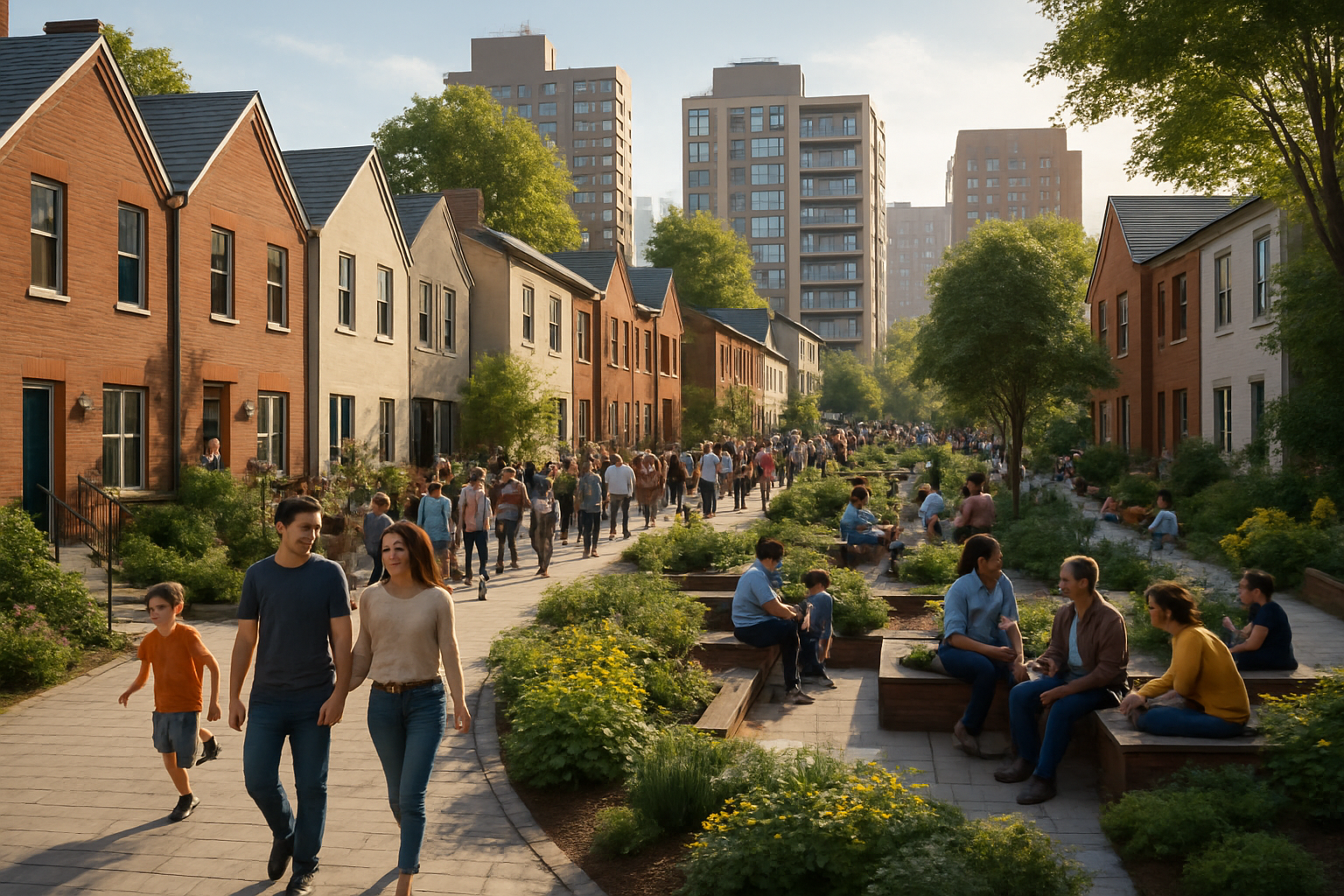Slow Cities: Redefining Urban Living in a Fast-Paced World
The global Cittaslow movement is quietly revolutionizing urban landscapes, challenging the breakneck pace of modern life. This innovative approach to city planning and community development prioritizes quality of life, local traditions, and environmental sustainability over rapid growth and consumerism. Read below to explore how Slow Cities are reshaping our understanding of progress and well-being in urban environments.

Origins and Philosophy of the Slow City Movement
The Cittaslow movement was born out of the Slow Food movement, which began in Italy in the 1980s as a response to the encroachment of fast food culture. Cittaslow expanded this philosophy to encompass entire urban environments, advocating for a way of life that resists the frenetic pace of globalization while embracing local identity and sustainability.
At its core, the Slow City philosophy emphasizes quality over quantity, promoting a balance between modern comforts and traditional values. It encourages cities to preserve their unique character, support local businesses, and foster a strong sense of community. This approach challenges the notion that bigger and faster always equates to better, instead focusing on creating environments where residents can thrive at a more natural, human pace.
Criteria and Implementation of Slow City Principles
To be certified as a Cittaslow, a town must meet a rigorous set of criteria that spans environmental policies, infrastructure, quality of urban life, local produce and products, hospitality, and community engagement. These standards ensure that Slow Cities are not merely quaint tourist destinations but vibrant, functioning communities with a clear vision for sustainable growth.
Implementing Slow City principles often involves revitalizing historical centers, promoting eco-friendly transportation, supporting local artisans and farmers, and creating spaces for community interaction. Many Cittaslow towns have implemented car-free zones, established community gardens, and developed programs to preserve traditional crafts and culinary practices. These initiatives not only improve quality of life for residents but also create unique, authentic experiences for visitors.
Economic and Social Impacts of the Slow City Model
Contrary to what the name might suggest, Slow Cities are not economically stagnant. Many have experienced a revitalization of their local economies through the promotion of artisanal products, sustainable tourism, and small-scale entrepreneurship. By focusing on quality and authenticity, these towns have carved out unique economic niches that resist the homogenizing effects of globalization.
Socially, the Slow City model fosters stronger community bonds and a deeper sense of place among residents. Public spaces are designed to encourage interaction, and local traditions are celebrated and preserved. This approach has been shown to increase civic engagement, reduce social isolation, and improve overall well-being. In an age of increasing digitalization and urban anonymity, Slow Cities offer a compelling alternative that prioritizes face-to-face connections and shared experiences.
Environmental Sustainability in Slow Cities
Environmental consciousness is a cornerstone of the Cittaslow movement. Slow Cities are at the forefront of implementing sustainable practices, from renewable energy initiatives to waste reduction programs. Many have become laboratories for innovative urban planning strategies that prioritize green spaces, pedestrian-friendly design, and the preservation of local ecosystems.
These environmental policies not only contribute to global sustainability efforts but also create more livable urban spaces. Residents of Slow Cities often enjoy cleaner air, quieter streets, and greater access to nature within their urban environment. This holistic approach to sustainability demonstrates how environmental stewardship can be seamlessly integrated into daily urban life, providing a model for cities worldwide.
Challenges and Criticisms of the Slow City Movement
Despite its appeal, the Slow City movement faces several challenges and criticisms. Some argue that the strict population limit and certification criteria make the model inapplicable to larger urban areas where the majority of the world’s population resides. Critics also question whether the Slow City approach can adequately address issues of economic inequality and provide opportunities for all residents.
Additionally, there are concerns about the potential for Slow Cities to become exclusive enclaves, attracting wealthy residents and tourists while pricing out long-time inhabitants. Balancing preservation with necessary development and avoiding the pitfalls of gentrification remain ongoing challenges for Cittaslow towns.
The Future of Slow Cities in a Rapidly Urbanizing World
As urbanization continues at an unprecedented rate, the principles of the Slow City movement offer valuable insights for creating more livable, sustainable urban environments. While the Cittaslow model may not be directly applicable to megacities, its emphasis on human-scale development, community engagement, and environmental stewardship can inform urban planning and policy decisions in cities of all sizes.
The future may see a hybridization of Slow City principles with smart city technologies, creating urban spaces that leverage innovation to enhance quality of life rather than simply increase efficiency. As more people seek alternatives to the stress and anonymity of large metropolitan areas, the Slow City movement is likely to gain further traction, influencing how we conceptualize progress and well-being in urban contexts.
The Cittaslow movement represents a profound reimagining of urban life, one that prioritizes human connection, environmental sustainability, and cultural preservation. As we grapple with the challenges of rapid urbanization and climate change, the Slow City model offers a compelling vision for creating resilient, vibrant communities that nurture both people and the planet. By slowing down and reconnecting with our local environments and traditions, we may find a path to a more sustainable and fulfilling urban future.





